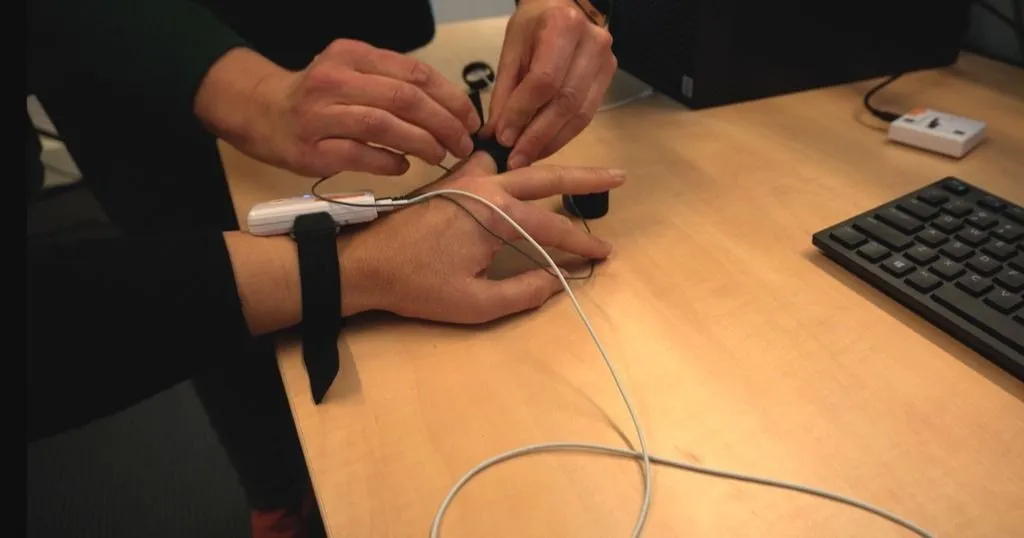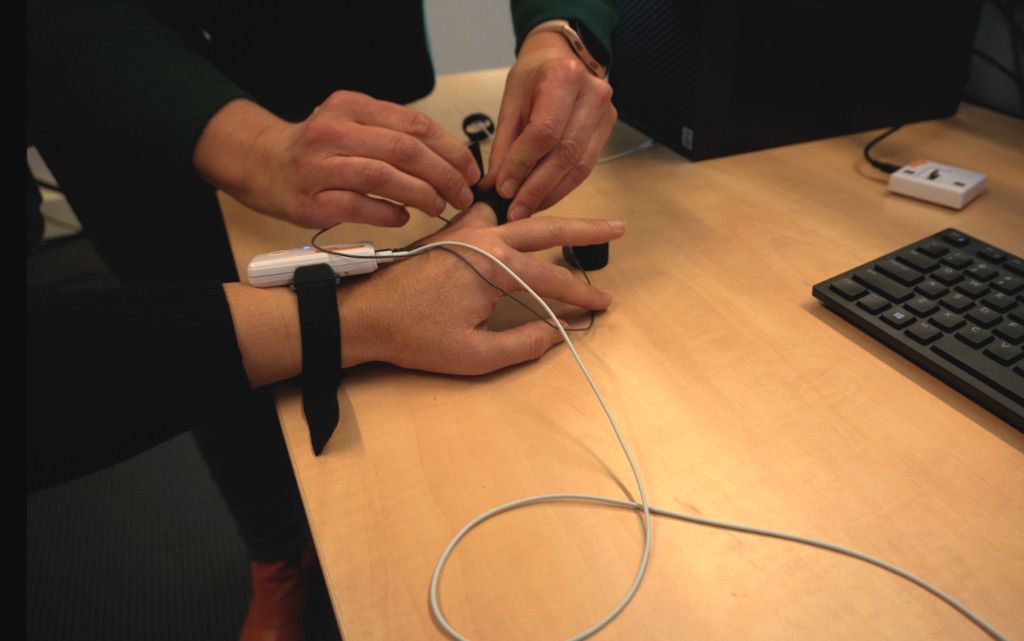What is Galvanic Skin Response?

In behavioral research, understanding human emotions and physiological responses is crucial. One of the most insightful tools in this field is Galvanic Skin Response (GSR). But what exactly is GSR, and why is it so valuable?
Posted by
Published on
Thu 01 Aug. 2024
Topics
| Behavioral Research | Emotion Recognition | Measure Emotions | Mental Workload | Methods And Techniques | Physiology |
Understanding the complexities of human emotions and physiological responses is critical in behavioral research. Galvanic Skin Response (GSR) is a very useful tool in this field and has been long used in psychological research. But what is GSR, and why is it important in scientific research?
What is Galvanic Skin Response?
Galvanic Skin Response is also known as Electrodermal Activity (EDA), and is a measurement of the electrical conductance of the skin. This conductance can vary due to changes in sweat gland activity, which is closely related to our body's autonomic nervous system. When a person experiences emotional arousal — such as excitement, stress, or fear — their sweat glands become more active, resulting in an increase in skin conductance. By measuring GSR, researchers can capture this change, and gain insights into the physiological processes underlying emotional and psychological states.
How is Galvanic Skin Response measured?
GSR is typically measured using electrodes placed on the skin, usually on the fingers or palms where sweat gland activity is most pronounced. These electrodes detect the electrical conductance between two points on the skin. The data collected is usually displayed as a continuous graph that depicts real-time changes in skin conductance.
The process involves:
- Placement of electrodes: Two small electrodes are attached to the participant’s skin, commonly on the fingertips or palm.
- Baseline measurement: Before introducing any stimuli, a baseline level of skin conductance is recorded to establish the participant's normal state.
- Stimulus introduction: The participant is then exposed to various stimuli, which could range from images and sounds to stress-inducing tasks.
- Data recording: As the participant responds to these stimuli, the GSR system records changes in skin conductance, indicating physiological arousal.

The role of GSR in behavioral research
GSR has become a cornerstone in behavioral research due to its ability to provide objective, quantifiable data on emotional arousal. Unlike self-reported measures, which can be influenced by bias or lack of self-awareness, GSR offers a direct measure of the body's unconscious responses. This makes it especially valuable in studies where understanding true emotional reactions is key, such as:
Emotion research: GSR is widely used to study how different stimuli affect emotional states. For instance, researchers can analyze how a participant's skin conductance changes in response to positive or negative images, providing insights into emotional processing.
Stress and anxiety studies: In research on stress and anxiety, GSR can reveal how participants physiologically react to stressors, helping researchers develop better interventions and treatments.
Human-Computer Interaction (HCI): GSR is employed to assess user experience by measuring emotional responses to different interface designs or software usability, aiding in the development of more user-friendly technologies.
Marketing research: Neuromarketers use GSR to gauge consumer reactions to advertisements, products, or brand experiences, offering deeper insights into consumer behavior beyond what traditional surveys can reveal.
Galvanic Skin Response is an invaluable tool in the field of behavioral research, offering unique insights into the physiological underpinnings of human emotions and reactions. By measuring the electrical conductance of the skin, GSR provides an objective, real-time view of how people respond to various stimuli, making it a critical component of research in psychology, neuroscience, marketing, and beyond.
What makes GSR such a effective biometric signal in assessing emotional behavior?
The answer lies in its ability to detect unconscious physiological responses that are closely related to emotional arousal. Unlike self-reported data, which can be skewed by conscious thought or social desirability bias, GSR measures the body's automatic reactions. This makes it especially useful for understanding the intensity and timing of emotional responses, giving researchers a clear, objective view of how emotions influence behavior.
Understanding and applying GSR can open up new avenues for exploration and discovery in the ever-changing field of behavioral science for researchers and students looking to delve deeper into the complexities of human behavior.
Limitations and considerations
While GSR is a powerful tool, it's important to note that it measures arousal rather than specific emotions. A rise in skin conductance can indicate both excitement and fear, so GSR data is often used in conjunction with other measures, such as facial expression analysis or heart rate monitoring, to provide a more comprehensive understanding of emotional states.
Additionally, environmental factors like room temperature and humidity, as well as the participant's level of hydration, can influence GSR readings. Researchers must carefully control these variables to ensure accurate and reliable data. Analysis tools like FaceReader or NoldusHub can help with objective measurement and assessment of this kind of data.
Related Posts

Alexa, Siri, Google – Are voice assistants the future of marketing?

Why observe driver behavior and distraction


